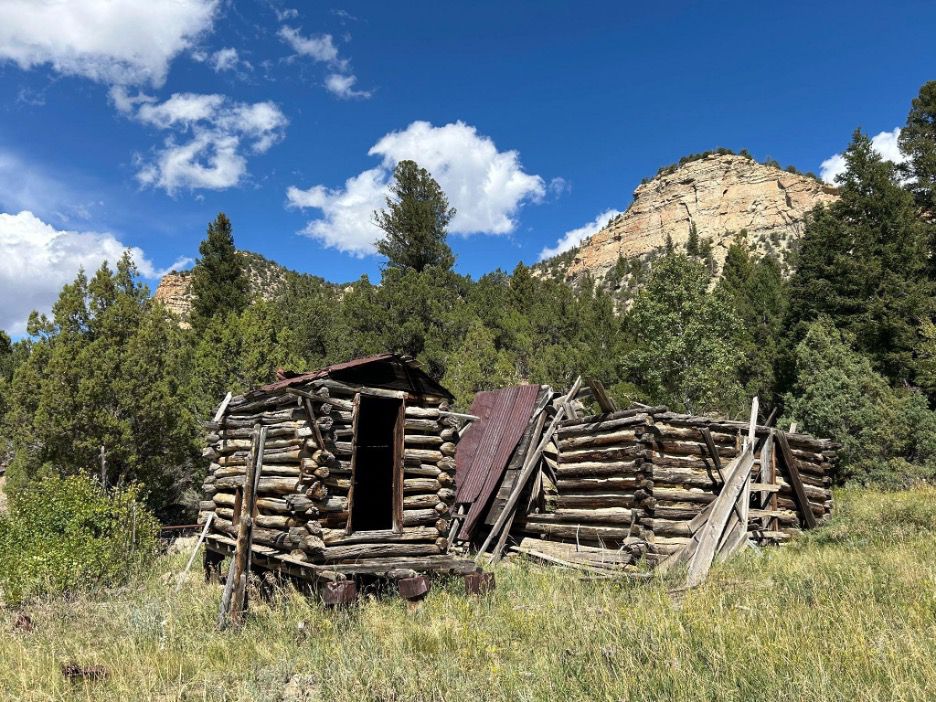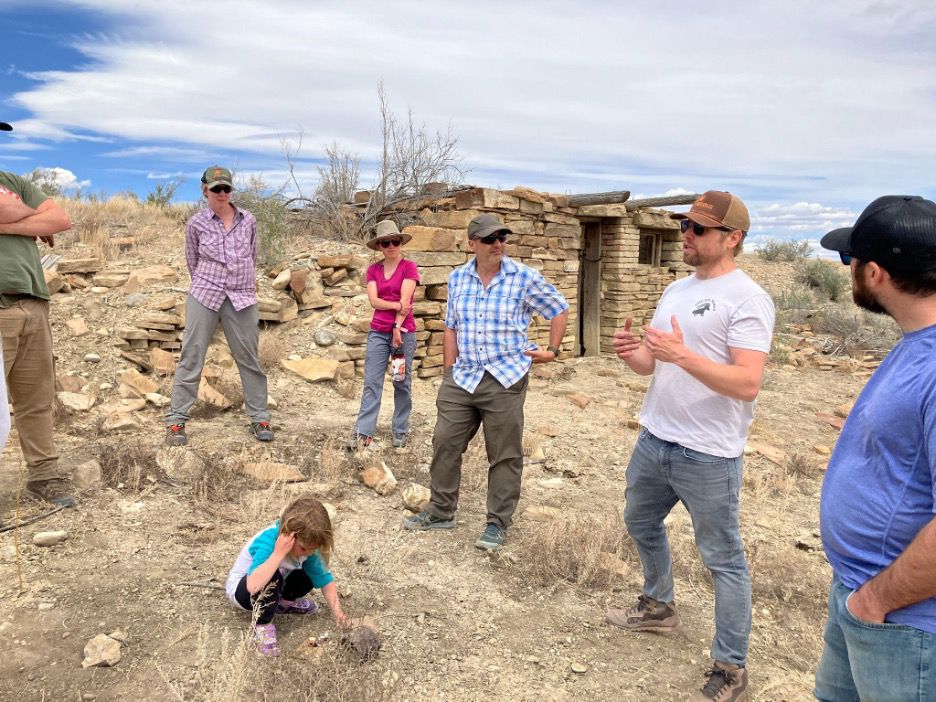State Historic Preservation Office Working with Volunteers to Preserve Cultural Agricultural Sites
Author
Published
3/13/2025
One thing anyone traveling through Utah will encounter wherever they may go, is the enduring legacy of farming and ranching on our landscape. In fact, these industries go back much further than some may assume. Whether you recognize it or not, their histories are woven into all facets of our rural and urban communities and affect our daily lives.
Utah has over 13,000 years of human history, and for most of that time, people living in Utah were engaged in agriculture and animal husbandry. Native Americans have employed sophisticated irrigation, terracing and other means to ensure limited water resources were effectively delivered to crops. Archaeological evidence even shows the domestication of turkeys and other animals through the use of willow-branch pens in alcoves over a thousand years ago.
 Historic granary and ranch monitored by stewards Uintah County.
Historic granary and ranch monitored by stewards Uintah County. Some of the first non-native people to travel through Utah did so to find a means to exchange goods, including livestock, between the “old” Spanish Colonies in New Mexico with the “new” Spanish Colonies in California. In 1809 we have records of Spanish cowboys driving herds of horses and mules from Santa Fe, through Spanish Valley, past Moab, over the Wasatch Range, and on into California. With the arrival of members of the Church of Jesus Christ of Latter-day Saints in 1847, ranching and farming would only grow larger and more important to Utah’s economy.
The evidence of the labor of those hard-working men and women speak to us and remind us of our past when we see old ranch log cabins, cattle brands carved into rock walls of canyons or farming equipment dotting the landscape from previous generations.
To better safeguard our cultural and archaeological heritage, Utah’s legislature has created a statewide Cultural Site Stewardship Program, which leverages the pool of passionate volunteers to help protect these places. This is a resource for all private, municipal, county, state, and federal landowners and managers to draw on to help protect historic sites. Volunteers who are interested in becoming involved participate in a training conducted by the State Historic Preservation Office within the Department of Cultural and Community Engagement, and are then assigned to help monitor important cultural assets and look for any damages that may accrue. If damages do happen, landowners are notified. The land manager can then draw on program support and heritage expertise to help with preservation efforts at that site.
 UCSS Stewards monitoring a historic ranching site in Emery County
UCSS Stewards monitoring a historic ranching site in Emery CountyVolunteer site stewards are also provided with many educational opportunities to learn more about the history of Utah and participate in related events. An example of this is the recent Ride Back in Time, an annual event where volunteers participate in a day-long OHV ride of specific regions in Utah to experience history firsthand.
The Utah Cultural Site Stewardship Program provides Utahns with a means to take an active role in helping safeguard their own heritage and in a meaningful and lasting way. Participants in this program include private ranchers and farmers who have volunteers helping to monitor cultural access on their land that adjoins public lands. There are also OHV and equestrian clubs that monitor sites along routes that their organizations value. A significant majority of volunteer site stewards are individuals with a passion for preserving their heritage in a way that actually makes a difference.
If you are one of these individuals or belong to a group that may be interested, please contact me at iwright@utah.gov or visit https://ushpo.utah.gov/shpo/archaeology-2/ucss/ for more information.
Want more news on this topic? Farm Bureau members may subscribe for a free email news service, featuring the farm and rural topics that interest them most!
